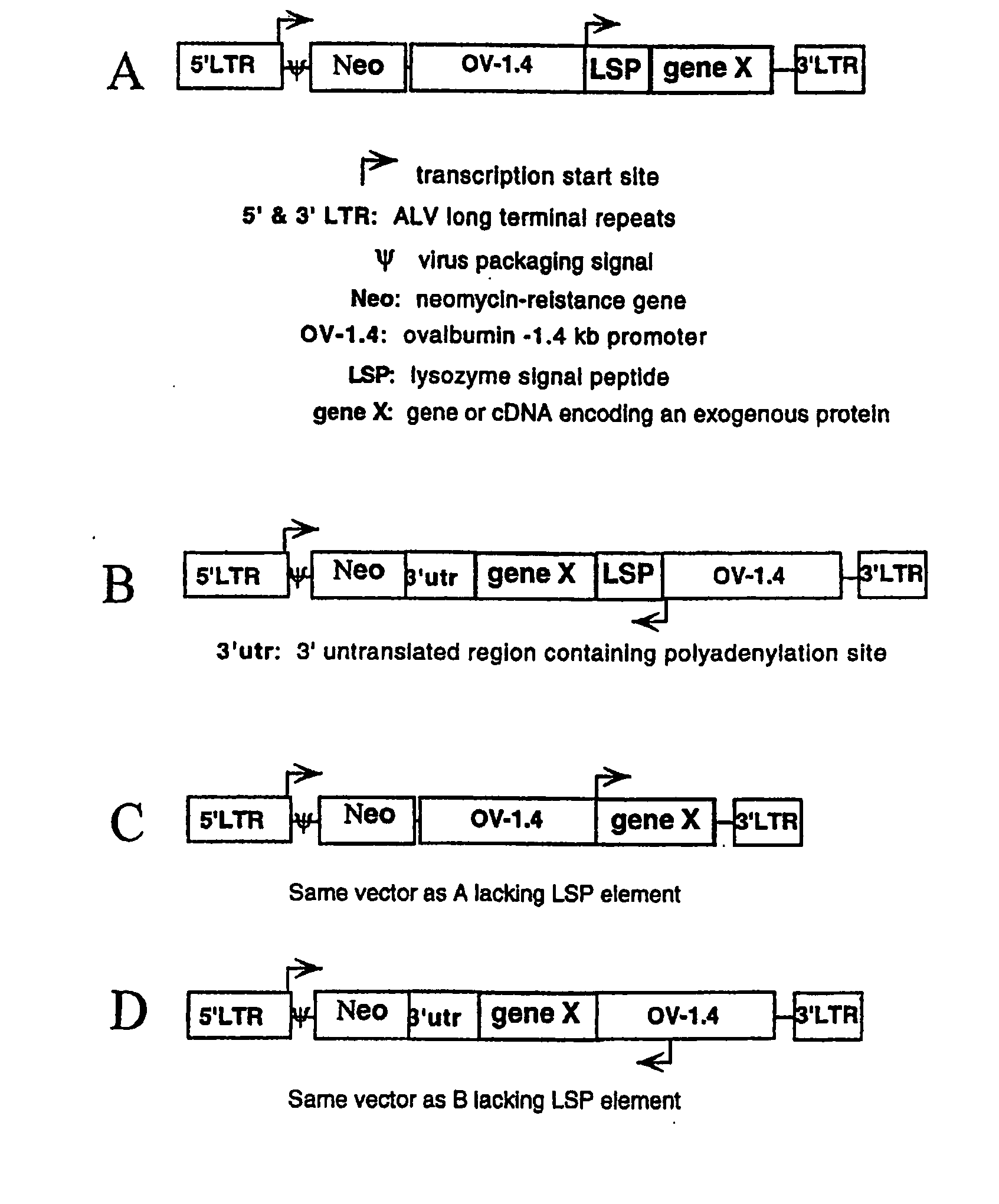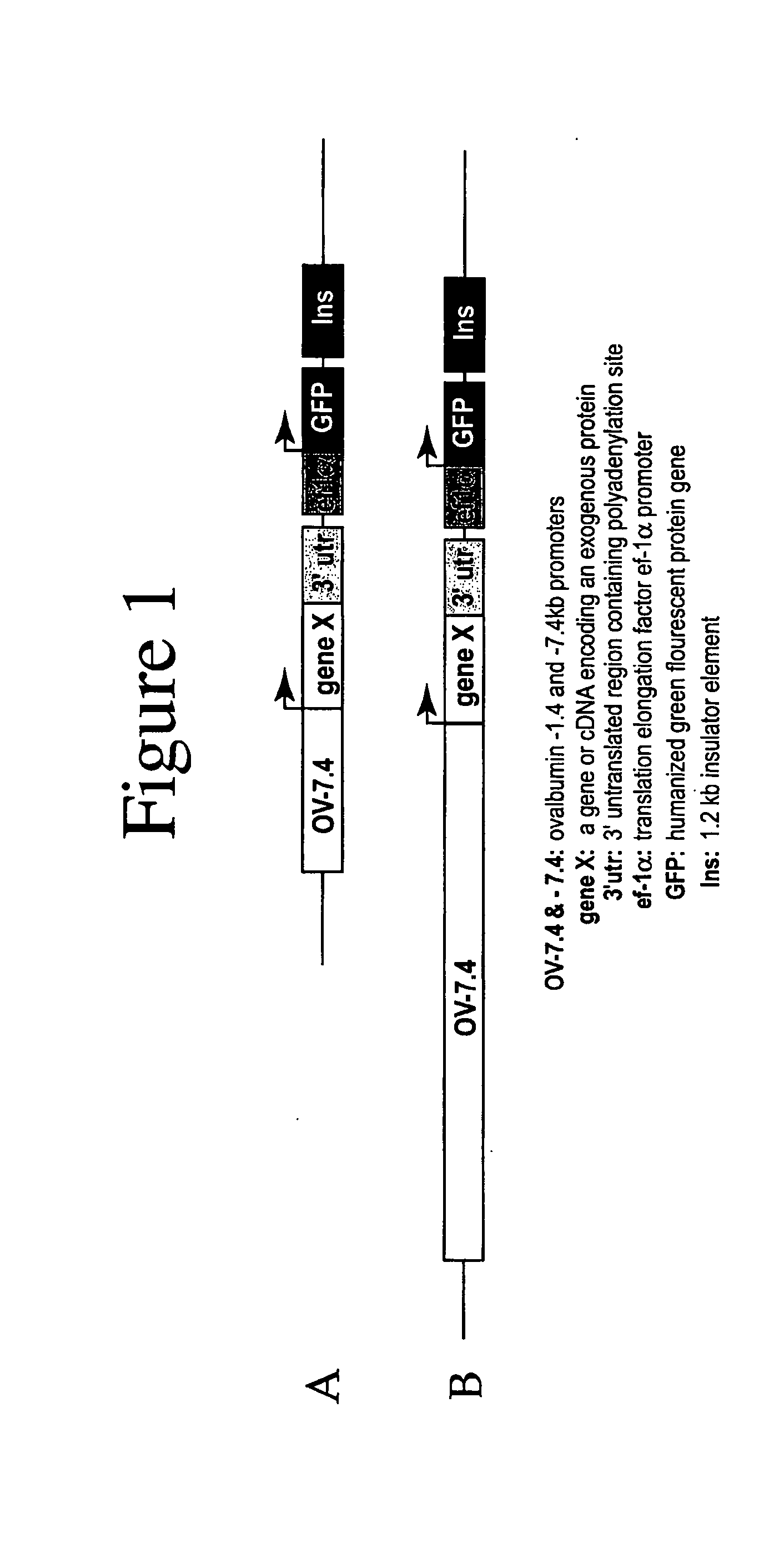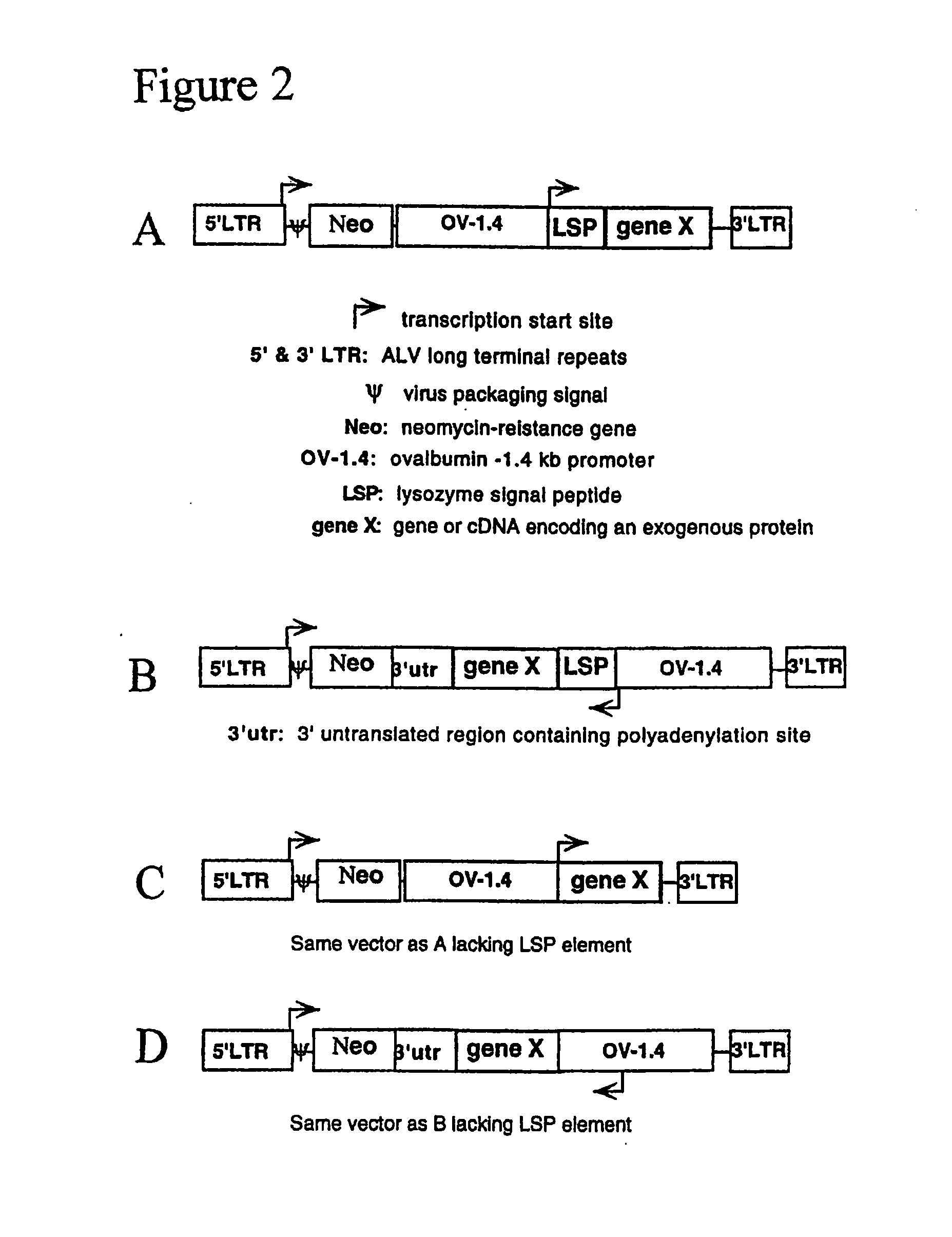Glycosylated G-CSF
a technology of glycosylated g-csf and glycosylated g-csf, which is applied in the field of transgenic avian species, can solve the problems of long generation time between the founder and the transgenic herd, high cost of these methods of protein production, and inability to meet the needs of transgenic herds
- Summary
- Abstract
- Description
- Claims
- Application Information
AI Technical Summary
Benefits of technology
Problems solved by technology
Method used
Image
Examples
example 1
Vector Construction
[0179] The lacZ gene of pNLB, a replication-deficient avian leukosis virus (ALV)-based vector (Cosset et al., 1991), was replaced with an expression cassette consisting of a cytomegalovirus (CMV) promoter and the reporter gene, β-lactamase. The pNLB and pNLB-CMV-BL vector constructs are diagrammed in FIGS. 3A and 3B, respectively.
[0180] To efficiently replace the lacZ gene of pNLB with a transgene, an intermediate adaptor plasmid was first created, pNLB-Adapter. pNLB-Adapter was created by inserting the chewed back ApaI / ApaI fragment of pNLB (Cosset et al., J. Virol. 65:3388-94 (1991)) (in pNLB, the 5′ ApaI resides 289 bp upstream of lacZ and the 3′ApaI resides 3′ of the 3′ LTR and Gag segments) into the chewed-back KpnI / SacI sites of pBluescriptKS(−). The filled-in MluI / XbaI fragment of pCMV-BL (Moore et al., Anal. Biochem. 247: 203-9 (1997)) was inserted into the chewed-back KpnI / NdeI sites of pNLB-Adapter, replacing lacZ with the CMV promoter and the BL gene...
example 2
Creation of the pNLB-CMV-BL Founder Flock
[0181] Sentas and Isoldes were cultured in F10 (Gibco), 5% newborn calf serum (Gibco), 1% chicken serum (Gibco), 50 μg / ml phleomycin (Cayla Laboratories) and 50 μg / ml hygromycin (Sigma). Transduction particles were produced as described in Cosset et al., 1993, herein incorporated by reference, with the following exceptions. Two days after transfection of the retroviral vector pNLB-CMV-BL (from Example 1, above) into 9×105 Sentas, virus was harvested in fresh media for 6-16 hours and filtered. All of the media was used to transduce 3×106 Isoldes in 3 100 mm plates with polybrene added to a final concentration of 4 μg / ml. The following day the media was replaced with media containing 50 μg / ml phleomycin, 50 μg / ml hygromycin and 200 μg / ml G418 (Sigma). After 10-12 days, single G418 resistant colonies were isolated and transferred to 24-well plates. After 7-10 days, titers from each colony were determined by transduction of Sentas followed by G...
example 3
β-Lactamase Expression in the Egg White of G0 Hens
[0183] Fifty-seven pullets transduced with pNLB-CMV-BL retroviral vector were raised to sexual maturity and egg white from each hen was tested for active β-lactamase (lactamase) at 8 months of age. Of the 57 birds, six had significant levels of lactamase that ranged from 56.3 to 250.0 ng / ml (Table 1, supra). No other hens in this group had detectable levels of lactamase in their egg white, even after incubation of PADAC with the sample for several days. Lactamase was not detectable in egg white from 24 hens that were mock injected and in 42 hens that were transduced with a NLB vector that did not carry the lactamase transgene. Stable lactamase expression was still detectable in the egg white of the six expressing hens six months following the initial assays (Table 1, supra).
[0184] Lactamase was detected in the egg white of all six hens by a western blot assay with an anti-β-lactamase antibody. The egg white lactamase was the same s...
PUM
| Property | Measurement | Unit |
|---|---|---|
| Mass | aaaaa | aaaaa |
| Mass | aaaaa | aaaaa |
| Mass | aaaaa | aaaaa |
Abstract
Description
Claims
Application Information
 Login to View More
Login to View More - R&D
- Intellectual Property
- Life Sciences
- Materials
- Tech Scout
- Unparalleled Data Quality
- Higher Quality Content
- 60% Fewer Hallucinations
Browse by: Latest US Patents, China's latest patents, Technical Efficacy Thesaurus, Application Domain, Technology Topic, Popular Technical Reports.
© 2025 PatSnap. All rights reserved.Legal|Privacy policy|Modern Slavery Act Transparency Statement|Sitemap|About US| Contact US: help@patsnap.com



